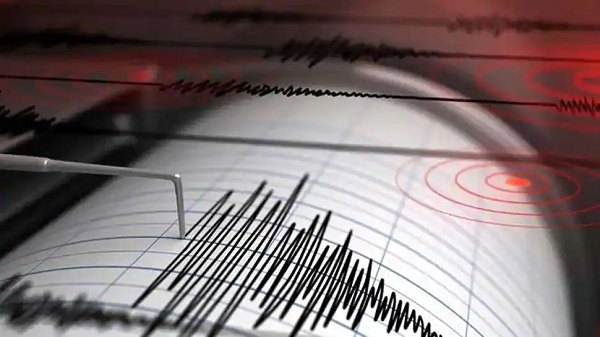With Tremors across North India, Earthquake of 6.3 magnitute hits Tajikistan
Total Views | 154
New Delhi, Feb 13: An earthquake of magnitude 6.3 hit Tajikistan on Feb 12. The tremors of the earth quake were felt in Delhi-NCR, Haryana, Punjab, Chandigarh and Himachal Pradesh. The seismology department at first gave the epicentre as Amritsar because of software error later confirmed the epicentre as Tajikistan. The incident has taken place after a series of serious seismic changes taking place in the Himalayan region starting from Tapovan in Uttarakhand and later in Afghanistan as well.

Strong tremors were felt across northern India for a few seconds, sending shock waves across the region and another Himalayan earthquake occurred during late hours on Feb 12 in Tajikistan. The earthquake measured 6.3 on the Richter scale and had triggered strong tremors across Afghanistan, Pakistan and northern states of India. The earthquake is categorized into the strong category and damage is possible in and around the epicentre, especially across east Tajikistan, north Pakistan, northeast Afghanistan and parts of Jammu and Kashmir.
Based on the data of the National Center for Seismology (NCS) records, more than 20 earthquakes have occurred in and around the Hindu Kush region this month so far. All the initial quakes in the region had been of magnitude less than 5 on the Richter scale, whereas the recent quake anged between 5.9 to 6.3 on the Richter scale. The Indian earthquake monitoring agency, NCS, reported a magnitude of 6.3, occurred at 10:31 pm, at an estimated depth of 74 km. The agency identified the location to be around 285 km away from Afghanistan's Fayzabad.
The Hindu Kush region is situated in an earthquake-prone region where the recurring earthquakes have wrought devastation. The entire Himalayan seismic zone is vulnerable to strong earthquakes as the Indian tectonic plate is continuously wedging into the Eurasian plates at a speed of 44 mm/year. Due to this motion of tectonic plates, stress builds up, and the earthquakes are triggered to release tension.
An earthquake is the process of shaking of the surface of the earth because of a sudden release of energy in the lithosphere of earth, which results in the formation of seismic waves. When the epicenter of the earthquakes is on surface, it results into shaking and displacement on the ground. Earthquakes are usually caused due to rupture of geological faults. However, it may also be caused due to volcanic activity, landslides, nuclear tests and mine blasts.
In India, although almost all Himalayan states are at constant risk, but the maximum risk areas for high-intensity earthquakes are classified as Zone-V. The zone broadly comprises the entire northeastern India, parts of Jammu and Kashmir, Himachal Pradesh, Uttarakhand, Rann of Kutch in Gujarat, parts of North Bihar and also the Andaman and Nicobar Islands.





